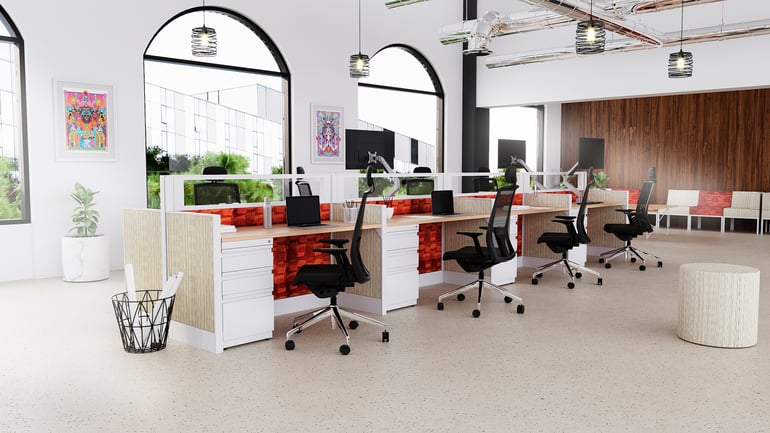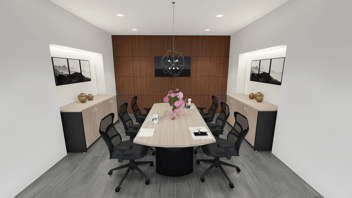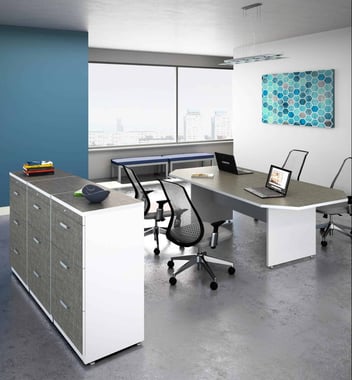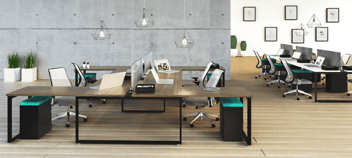Office Furniture Buying Guide
Follow this complete office furniture buying guide that will help you create a productive and healthy environment.
Here, we bring you a simple guide with the key steps you can take into account while you acquire the ideal office furniture according to your company’s particular needs. Some crucial points that should be taken into account could significantly contribute to improving the company’s productivity.
6 steps on your guide to buy office furniture
The following steps will help you establish a schedule for each of the actions you will need to take to furnish your office.
1- Analyze & measure
It is essential to make all necessary calculations for an optimal distribution of all available spaces from the beginning. It is crucial to segment functions into basic areas, such as executive, technical, administrative, and customer service.
Each area is focused on a specific number of people, needs particular types of storage, and requires specific tasks to be carried out. Therefore, making a map of the necessary functions and assuring to allocate areas and furniture for all functions is an excellent way to distribute spaces and the budget properly.
2- Study alternatives to optimize functions
With conventional office furniture, it is also possible for the distribution of spaces to become more efficient.
For example, if you have allocated a zone to separate employees, maybe a modular system would be better to use the space. If you are assigning a large area to install cabinets and filing cabinets, a small space for a mobile filing cabinet may be more efficient.
If you have decided on installing a modular area in a certain section, and adjacently, a collaborative work area, perhaps implementing a station with adjustable height would be better, which could fulfill both functions. Likewise, analyzing the priority of cooperative or free spaces before fixed positions per person is an example of processes that provide more efficient results.

3- Choose scalable options
It’s difficult, but not impossible, to have the perfect plan that always works. Bearing this in mind, it is also advisable to always maintain a capacity to adapt or expand any area’s functions.
Considering this, modular systems are a great alternative since they can easily adapt and increase their capacities depending on the company’s needs without complex installation.
4- Ergonomics is essential
A crucial factor that today, every company must take into account is ergonomics. An issue that costs millions of dollars a year in medical bills to companies worldwide and severely undermines your workers’ performance.
5- Prioritizing quality
It is also essential to prioritize quality, which always translates into a more efficient investment. Opting for cheap furniture, or worse yet, used, is a risk that proves inconvenient.
It is better to designate a sufficient budget for certified and quality furniture alternatives, representing a lower risk of accidents, offering greater durability, and best of all, genuinely efficient functionality to maximize performance within the company.
6 - Consider sanitary recommendations
During COVID, it is pertinent to adapt to recommended hygiene measures to minimize health risks. Considering this, office design adaptations such as additional extensions, transparent partitions to separate adjoining places in meeting rooms, or translucent panels to avoid direct contact with adjacent desks or workstations are handy accessories.
Easy-to-adapt mobile alternatives such as those offered by Gebesa, with the ability to precisely adjust to your office furniture, are fantastic options. Consider also strengthening these measures even more in customer service areas.
Comprehensive office furniture buying plan
By designing a general plan to address your furniture installation strategy, you can also map out a more efficient and homogenous route.
This also contributes to improving the company image, with a well-planned design adapted to fulfill its different functions and needs.
Be sure to include a protocol to manage and maintain the furniture. When quality alternatives are used and processes are respected, the life of the furniture will be prolonged, and depreciation will be minimized.






